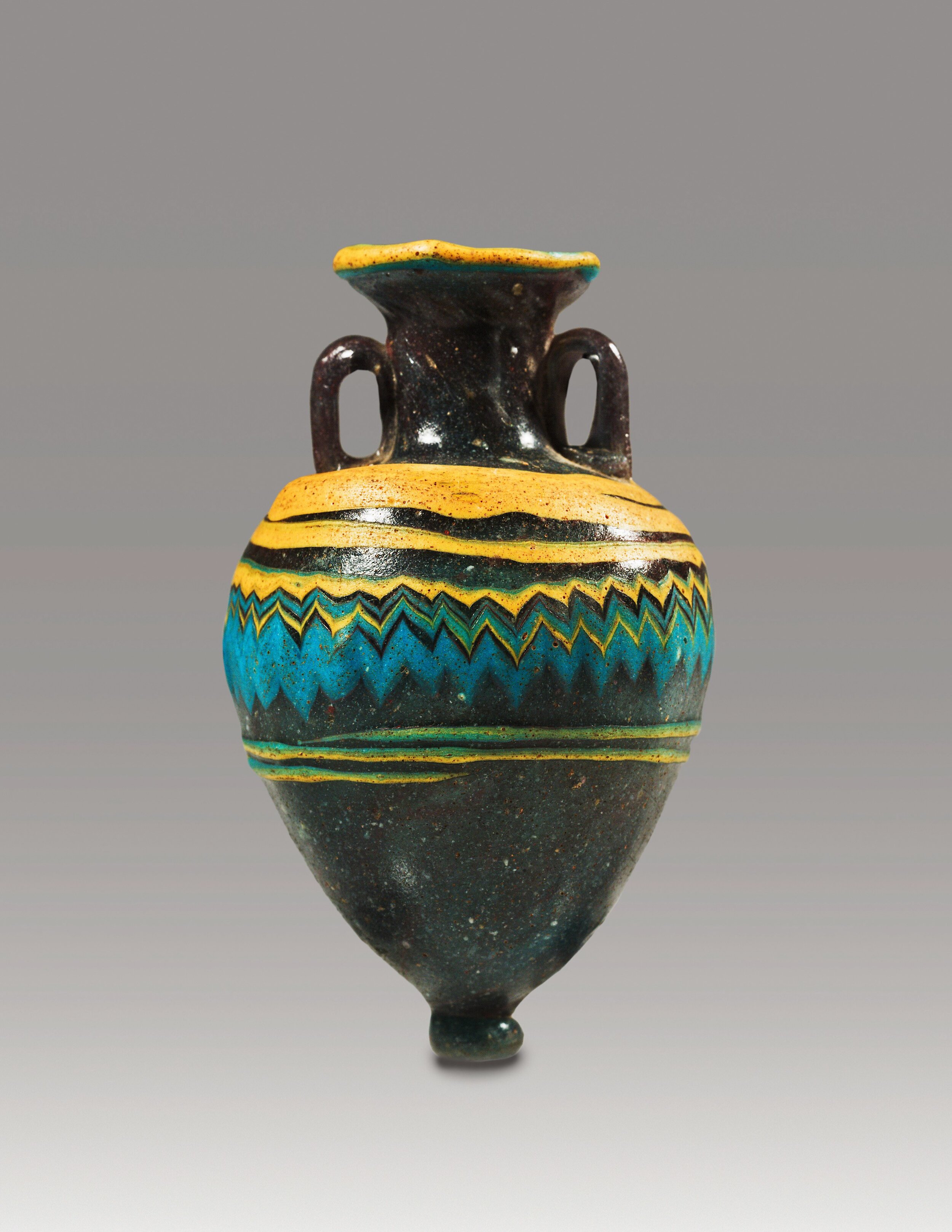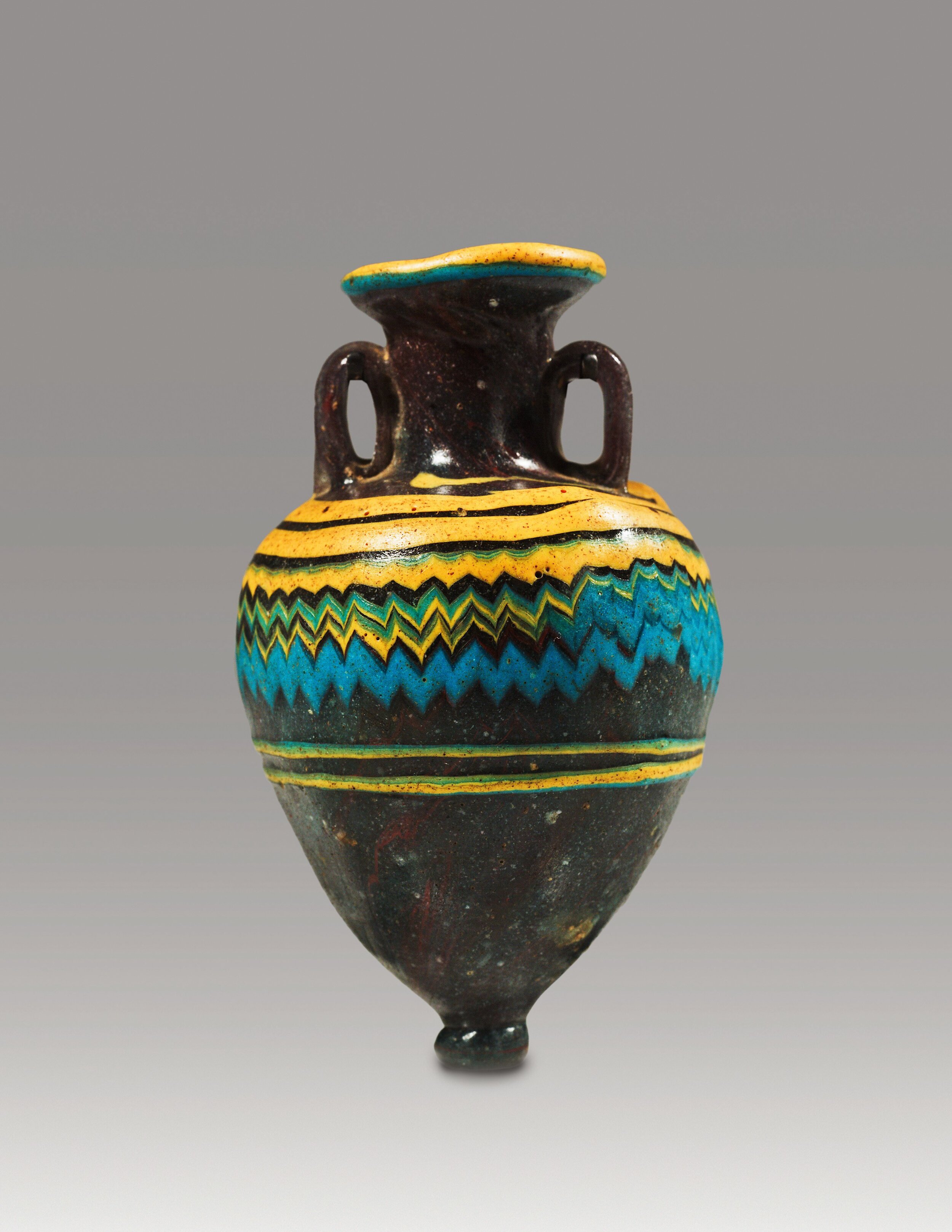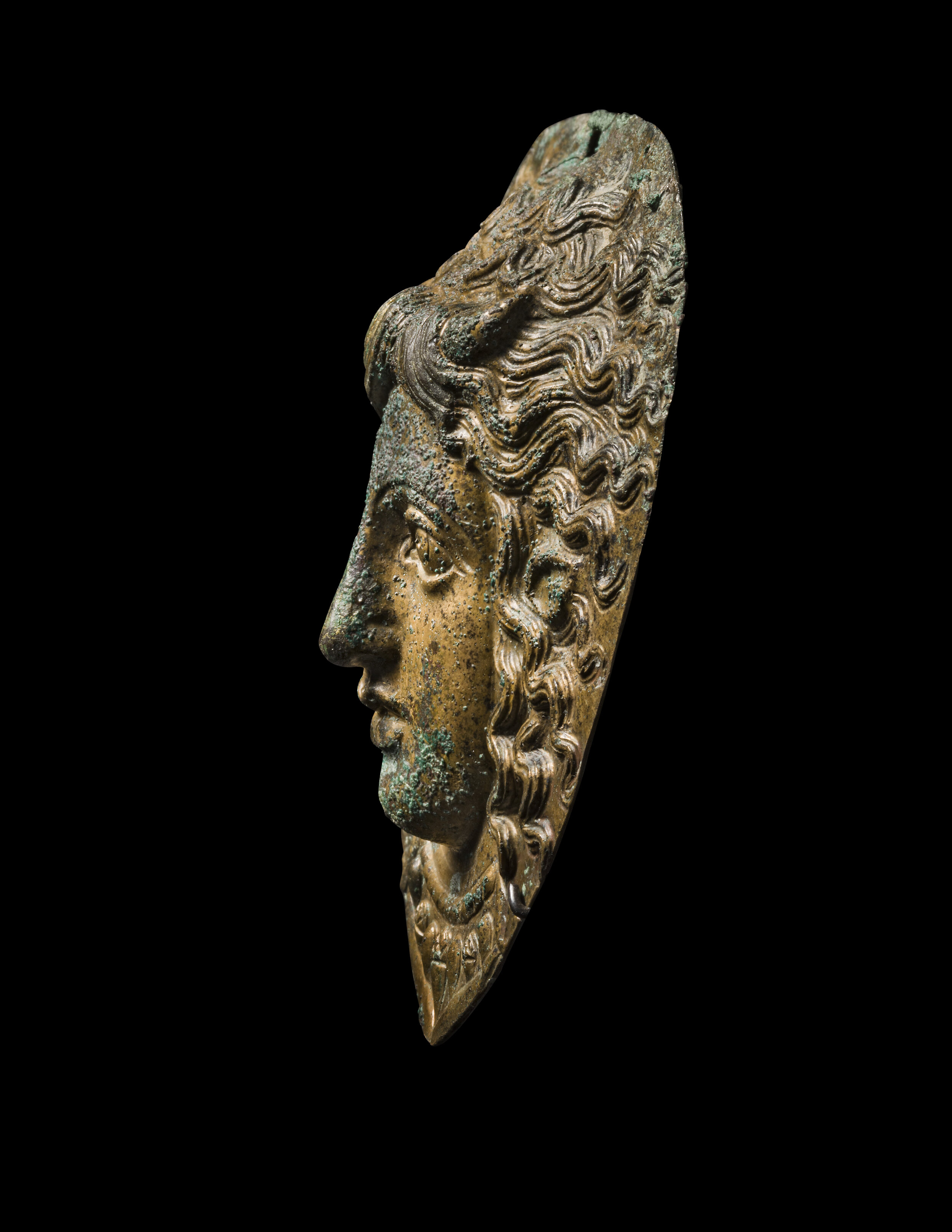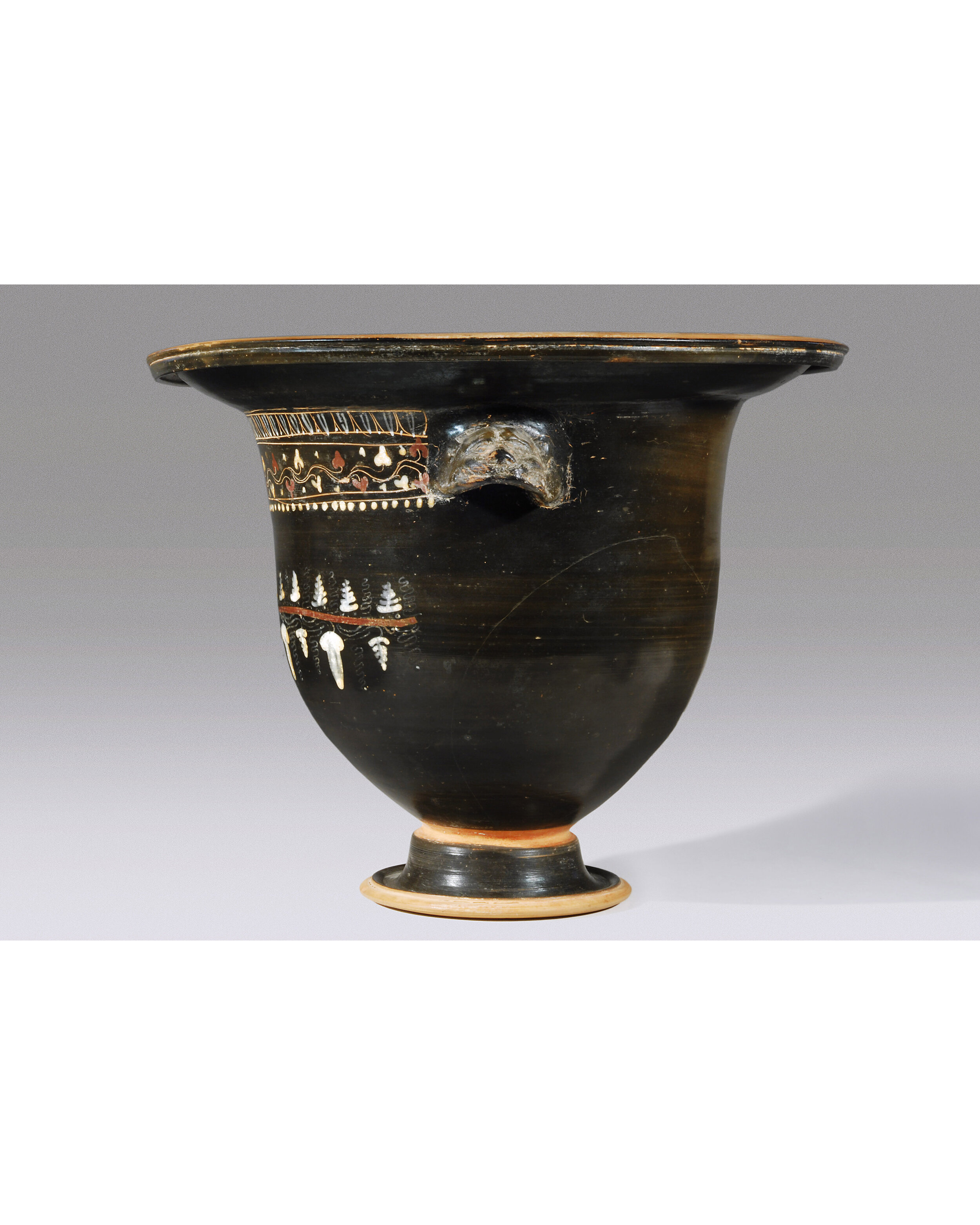Ancient Greek Bronze Appliqué Depicting a Seated Philosopher or Poet




Ancient Greek Bronze Appliqué Depicting a Seated Philosopher or Poet
Greek, 4th Century B.C.
Bronze
L: 4.8 cm
Serial: 17198
The elderly figure is seated upon a rock clothed only in a himation, or cloak, extending from his left shoulder across the lower back to the waist and then gathered in deep folds that drape down from his lap. He supports his head with chin resting on the hand of the left arm, which is sharply bent at the elbow and placed upon his knee; the right arm is also bent and the hand clasps the elbow of the left arm. The legs of the figure are bent at the knees. Both the arms and legs are positioned in a pose typical for this type. He has a long beard and moustache, with long hair hanging down at the sides. The emotional and intellectual intensity of the figure is conveyed in an expressive face that looks out to the viewer. The body language of the figure – the crossed legs, position of the arms, and forward leaning pose – evoke the impression of a thoughtful individual.
Although this lifelike image of an elderly seated man appears as an original and spontaneous creation, the distinctive and individualized appearance of the figure associates it with the representation ofHellenistic portraits of philosophers and poets and their seated sculptural type that became popular during the fourth century B.C. An imagery that most ancient Greeks would recognize, the figure’s expression of deep concentration combined with the seated pose, beard, and draping himation, all contribute to the identification of this older male figure as a philosopher or poet. The seated posture in particular appears to be the format of choice for representations of then contemporary poets or those of the distant past. The faces of these figures employ a distinctive, traditional portrait style similar to those used in the fourth century B.C. for the bearded elderly figures depicted on grave reliefs. They have powerfully lined, realistic faces that, although showing signs of old age, are typically infused with a look of visionary inspiration that was believed to embody the “poetic enthusiasmos,” one of the best examples of which is the so-called Pseudo-Seneca type that most agree is an image of the poet Hesiod. Noting that Socrates taught that the inspiration of poets is a form of enthusiasm, the term was applied by the Greeks to manifestations of divine possession and inspiration by the gods, such as Apollo or Dionysus.
The appliqué is solid cast and flat at the back; an indentation in the bronze that extends across his upper forehead may have held a fillet or similar adornment for the head. For a seated philosopher, see D. Mitten and S. Doeringer, Master Bronzes from the Classical World (Cambridge, MA 1967), 252, no. 241; and the standing statuette of a philosopher (Metropolitan Museum of Art, acc. no. 1910.10.231.1) in A. Kozloff and D. Mitten, The Gods Delight: The Human Figure in Classical Bronze(Cleveland 1988), 154, no. 26. For a marble statuette of the seated philosopher type (Metropolitan Museum of Art, acc. no. 24.73), see G. Richter, Bulletin of the Metropolitan Museum of Art 20 (1925): 104, fig. 1.
Provenance
European private collection, 1992









